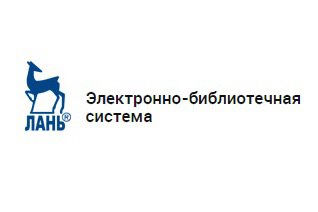| УДК 622.7.09 | DOI: 10.21440/0536-1028-2019-8-81-87 | Download |  |
Stupakova E. V. Reproducibility and repeatability of measurement results and their application when calculating the errors of ore and concentrates samples preparation and analysis. Izvestiya vysshikh uchebnykh zavedenii. Gornyi zhurnal = News of the Higher Institutions. Mining Journal. 2019; 8: 81–87 (In Russ.). DOI: 10.21440/0536-1028-2019-8-81-87
АННОТАЦИЯ
Introduction. Well-known formulae make it possible to analytically calculate the random error of mass-reduction at samples preparation and their preparation for analysis, which is also true for weighted samples collection for analysis; it helps to calculate, analyze and optimize the circuits of samples preparation, including reference standards preparation. All these values can be determined by means of direct measuring, but the performer’s qualifcation cannot be taken into account.
Research aim is to determine and test the sample reduction error formula coefcient which takes into account the quality of performers work at sampling.
Research methodology. For experimental evaluation of performance quality, gold and silver side-by-side assays of gold concentrate in two independent laboratories were carried out, which allow determining the repeatability error by duplicate analysis. The comparison was carried out of the two laboratories’ work on random repeatability errors determination.
Results. It has been proposed to use the coefcient of the performer’s work quality when calculating random errors of samples preparation for analysis. Coefcient’s application is shown by the example of gold-bearing product preparation circuit design.
Conclusions. The formula which calculates the error of mass-reduction caused by the reduction of sample mass describes the procedure of ideal reduction until the quality of the performer’s work is taken into consideration. When calculating and analyzing sample preparation circuits (including weighted samples collection for analysis), the error should be taken into account, which is introduced due to the imperfect process by the performer. The ratio of reproducibility error to repeatability error in analysis procedures produces the coefcient of imperfection of performing the operation of weighted samples collection for analysis from the package, which is 1.1–1.6 for noble metal ore, and 1.2–1.4 for nonferrous metal ore. Experimental determination of sample preparation errors and their comparison with expected values make it possible to estimate the quality of laboratories’ work and take measures to improve their work.
Key words: reproducibility; repeatability; random error; samples preparation for analysis; coefcient of performance.
REFERENCES
- Karpenko N. V. Concentrates sampling and quality control. Moscow: Nedra Publishing; 1987. (In Russ.)
- Komlev A. S. The conditions of reliable determination of valuable component mass fraction in mineral processing products. Izvestiya vysshikh uchebnykh zavedenii. Gornyi zhurnal = News of the Higher Institutions. Mining Journal. 2019; 5: 63–74. (In Russ.)
- Ralph J. Holmes. The importance of sampling in resource defnition, process control, metallurgical accounting and sales of mineral products. In: XXVIII International Mineral Processing Congress Proceedings, Australia, 2016. P. 1–15.
- Kozin V. Z. Mineral sampling. Ekaterinburg: UrSMU Publishing; 2011. (In Russ.)
- Stephane Brochot. Sampling within fre assay and screen fre assay. Sampling Conference, Australia, 2012. P. 1–16. Available from: http//procsim.ru/papers/Caspeo-SC_2012-Sampling_within_fre_assay_and_screen_fre_assay.pdf
- Lyman G. J., Robertson I. G. and Day T. The simple facts about sampling gold ores. 13th Ausimm mill operators conference, Perth, WA, 10–12 October, 2016. P. 1–14.
- Kozin V. Z., Komlev A. S., Volkov P. S., Stupakova E. V. Defning random errors of ore and concentrates samples preparation and analysis. Izvestiya vysshikh uchebnykh zavedenii. Gornyi zhurnal = News of the Higher Institutions. Mining Journal. 2018; 5: 82–86. (In Russ.)
- Kozin V. Z. Mineral sampling at dressing mills. Ekaterinburg: UrSMU Publishing; 2018. (In Russ.)
- Stupakova E. V. Measuring errors in the compositional reference materials of gold ore. Izvestiya vysshikh uchebnykh zavedenii. Gornyi zhurnal = News of the Higher Institutions. Mining Journal. 2019; 6: 81–89. (In Russ.)
- Jean Pauwels, Andree Lamberty, Heinz Schimmel. Homogeneity testing of reference materials. Accred Qual Assur, Springer-Verlag. 1998; 3: 51–55.
- Thomas P. J. et. al. Homogeneity and stability of reference materials. Accred Qual Assur, Springer-Verlag. 2001; 6: 20–25.
- Brand N. W. Gold Homogeneity in Certifed Reference Materials; A Comparison of Five Manufacturers. Explore. 2015; 169: 1–24.
Received 4 September 2019









